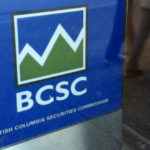The decision in DBDC Spadina Ltd. v. Walton, 2018 ONCA 60 provides insight on when corporations that are de facto under control of a fraudster can be held liable for claims of knowing assistance in the breach of fiduciary duty and knowing receipt of trust property. This is the first of three posts in which we will report on recent decisions by the Ontario Court of Appeal arising out of a fraud that was found to have been perpetrated by Norma and Ronauld Walton. Both the appellants and the respondents in this appeal were victims of the Waltons who had convinced numerous people to invest in commercial real estate properties. The Waltons then moved the invested funds through various shell corporations to further their personal interests. Our previous post on these long-running proceedings can be found here.
The Fraud
At the root of the appeal was a fight between the victims over the priority of their claims against the proceeds from the sale of properties that were acquired as part of the scheme. The appellants, known as the “DBDC Applicants” were controlled by Dr. Bernstein, who had invested approximately $111 million with the Walton’s “Schedule B Companies.” The respondent, the Christine DeJong Medicine Professional Corporation (“DeJong”), invested approximately $4 million in the Walton’s “Schedule C Companies.”
In September 2016, Justice Newbould awarded the DBDC Applicants approximately $66 million against the Waltons personally for fraudulent misrepresentation, deceit and breach of fiduciary duty. However, Justice Newbould dismissed the claim for joint and several liability against the Schedule C Companies because Ms. Walton was not the controlling mind of those companies, and therefore he found that her conduct could not be attributed to them.
One of the main issues on appeal was whether Justice Newbould erred in finding that the Schedule C companies were not jointly and severally liable to the DBDC Applicants on the basis of knowing assistance and/or knowing receipt.
Liability of a Stranger to a Trust
There are three ways in which a stranger to a trust can be held liable as a constructive trustee for breach of trust:
- as a trustee de son tort, where a stranger assumes the office or function of trustee;
- for “knowing assistance”, where a stranger knowingly assisting in a fraudulent and dishonest design on the part of the trustees; and
- for “knowing receipt”, where a stranger receives or applies trust property for his or her own use and benefit.
Writing for the majority, Blair J.A. clarified that the Schedule C companies could only be held liable under the doctrine of “knowing assistance.” This form of accessory liability is fault-based and is concerned with correcting matters related to the furtherance of a fraud. By contrast, Blair J.A., clarified that “knowing receipt” liability is restitution-based and is in essence unjust enrichment.
Based on the criteria set out in Enbridge Gas Distribution Inc. v. Marinaccio, 2012 ONCA 650, a claim for knowing assistance in the breach of a fiduciary duty is established if: (1) there is a fiduciary duty; (2) the fiduciary – in this case, Ms. Walton – has breached that duty fraudulently and dishonestly; (3) the stranger to the fiduciary relationship – in this case, the Schedule C Companies – had actual knowledge of both the fiduciary relationship and the fiduciary’s fraudulent and dishonest conduct; and (4) the stranger must have participated in or assisted the fiduciary’s fraudulent and dishonest conduct.
Whether Ms. Walton was the Controlling Mind of the Schedule C Companies
On appeal, there was no issue that Ms. Walton breached her fiduciary duty to the DBDC Applicants. The liability of the Schedule C Companies turned on a determination of the third and fourth requirements for knowing assistance, which could be satisfied by the finding that Ms. Walton acted as the directing and controlling mind of the companies such that her actions could be attributed to them. Blair J.A’s detailed analysis determined that Ms. Walton was the controlling mind of the Schedule C Companies, which lead to the ultimate determination that they could be held jointly and severally liable for the fraudulent scheme.
The assessment of whether Ms. Walton was the controlling mind was based on the Supreme Court of Canada’s decision in Canadian Dredge and Dock Company Limited v. R., 1985 CanLII 32 (SCC), which considers whether the action taken by the directing mind was (a) within the field of operation assigned to that person; (b) not totally in fraud of the corporation; and (c) by design or result, partly for the benefit of the company. Blair J.A. found that all three criteria were met and made two noteworthy points that clarify this area of the law. First, the formal structure of the companies is not dispositive of the issue. Second, it is not necessary to import a “tracing requirement” into the analysis of a knowing assistance claim.
1) The formal governing structure is not dispositive
In assessing whether Ms. Walton was the controlling mind of the Schedule C Companies, Blair J.A. held that Newbould J. erred by restricting his analysis to the formal governing structure of the investment agreements. The Schedule C Companies were structured such that Ms. Walton was a 50% owner. Blair J.A. emphasized that:
“What matters is the factual reality of the situation and whether Norma Walton was acting “within the field of operation assigned to [her]” and “carrying out [her] assigned function[s]” with respect to the corporations at the time she used them as vehicles to perpetrate her fraud.”
The relevant question was whether Ms. Walton had caused the Schedule C companies to participate in her fraudulent dealings. Blair J.A. found that because Ms. Walton exercised complete management and control over all of the relevant actions of the Schedule C Companies. In short “her perpetration of the scheme was their participation in the scheme.”
2) It is not necessary to import a “tracing requirement” into a knowing assistance claim
In applying the Canadian Dredge criteria, Blair. J.A. found that in order for Ms. Walton’s conduct to be attributed to the Schedule C Companies, it was not necessary show evidence of that each individual company benefitted from the scheme. The Schedule C Companies were not the victims of the fraud, their investors were. Policy considerations supported a “more flexible approach in complex and large, multi-corporation, multi-party fraud cases”.
Blair J.A. held that incorporating a “tracing requirement” into a knowing assistance claim would collapse the distinction between knowing assistance and knowing receipt, and create an insurmountable hurdle to precisely tracing the fraudulently co-mingled funds. The overall fraudulent scheme, and the Schedule C Companies’ knowing assistance in the perpetration of the shell game provided the prism through which liability for this claim was determined. It was sufficient that the Schedule C Companies “knowingly assisted in Ms. Walton’s fraudulent and dishonest scheme to divert monies out of the Schedule B Companies’ accounts.”
In her dissenting opinion, van Rensburg J.A. disagreed, taking the view that it was sufficient that there was evidence that showed money was diverted out of the Schedule B Companies’ accounts. She affirmed the Application Judge’s assessment that a tracing requirement was necessary and that the “net transfer analysis” relied on by the DBDC Applicants was insufficient to establish that the Schedule C Companies actually received the funds such that a claim for knowing assistance could be supported.
Additionally, van Rensberg J.A. raised equitable concerns that a judgment for $22.6 million against the Schedule C Companies would enable the DBDC Applicants to share in the proceeds of sale of the Schedule C Properties as unsecured creditors, which would overwhelm the claims of the other investors who were also victims of the Waltons’ fraud.
Take-Aways
-
- In the right circumstances, an entity controlled by a fraudster will be liable for the fraudster’s breach of trust or fiduciary duty.
- In assessing whether a fraudster is the controlling mind or alter ego of an entity, the formal structure of the investment agreement is not dispositive.
- In complex, multi-party fraud cases, Ontario courts will not require evidence of each company’s benefit in a knowing assistance claim where there has been fraudulent co-mingling of funds.
With thanks to Ben Sakamoto for his assistance writing this article.




